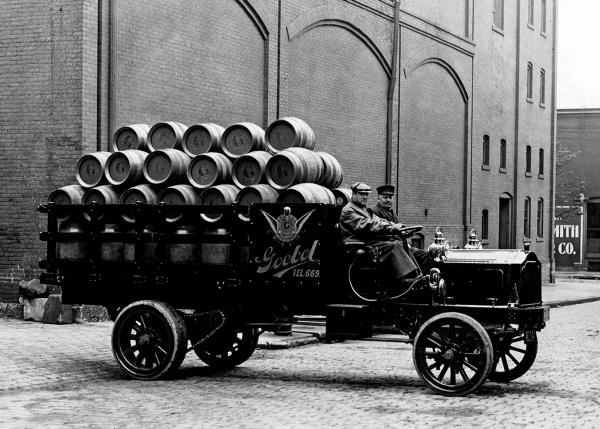COVID-19 is going to transform many aspects of our daily lives. Dozens of industries will not look the same after we collectively get through this crisis. Our society, and our economy will be very different. The craft beer industry in Canada is no exception. There will be some fundamental structural changes to how beer is produced and sold. The changes will be embraced by some and will swamp others.
This post is the second part of an analysis of how COVID-19 might affect craft beer. In the first part a few days ago I discussed some of the short and medium term economic impacts on the craft beer industry (you can read that post here).
I intend this post to be a bit more hopeful, as I want to look at things post-pandemic. Of course, take all I am about to say with a grain of salt. The basic reality is none of us can know what many aspects of our world will look like in a year or two from now. We are in uncharted waters. See this an exercise in creating some initial sketches while I kill time while social distancing.
A Leaner Industry
First, there will be fewer breweries. Exactly how many fewer is a big question. There has been some discussion about numbers since part one the other day, with most arguing I am overly optimistic. We will see. Regardless of whether is a reduction of 10% or 30%, we will see a leaner industry. Debt and cash flow are unforgiving beasts. But those breweries that do survive this crisis will come out battle tested and stronger. In a way, (and I do not mean to trivialize this) the crisis is speeding up the natural attrition that comes with a maturing industry. We were always going to lose breweries, just maybe not this quickly.
I have said before people will be surprised by which breweries will end up closing. Everyone has their personal list of struggling breweries in their region. But those of us not inside those companies can never be sure how things really are. A brewery that looks healthy from the outside could be bleeding money, while one that seems like it is cash-strapped might find an angel investor.
Therefore I won’t predict which breweries, or even which type of breweries, will fail. In fact, I think we will see examples from all the various business models (all business models can work and all can fail – it depends on how you operationalize).
Local, Local, Local
On the upside, this crisis is likely to intensify consumers support for local. In the early going of the restrictions, we are seeing people stepping up to support local businesses – not just breweries but restaurants, stores and other small operators. It is always possible to overstate anecdotal expressions of support for local – the vast majority of beer will continue to come from the big boys. But I think this trend is real. The shift to local was already underway and something like this crisis can change people’s mindsets. If nothing else, it forces them to change their purchasing habits in the short term (trying something maybe they hadn’t before) which can lead to long term re-alignment of choices.
This trend will mean two things. First, those breweries and craft beer bars and homebrew supply shops (that one is for Andrew at Winning Wines Plus! – read the comments on Part I if you don’t get it) that have made real connections with people in their community, created a sense of locality will see their business increase post-crisis (even if the economy is sluggish for a while). When people are allowed to return to normalcy they will gravitate to things they appreciate the most.
Second, I think it will lead to a shake-up in the import segment, especially inter-provincial imports. I think import market share will shrink overall. And I think fewer breweries will ship their beer around the country/continent. In part because they will need to re-focus to shore up home markets but also in part because the drift to local will accelerate. The long established international imports (hello Euro Lagers!) will be fine – they have a dispersed business model – but smaller craft brewers who rely on out-of-province sales for income will see a reduction in their business.

Entrenchment of New Business Practices
People will never purchase their beer the same way again. The supply line between producer and consumer will be forever changed by this crisis. The methods breweries, liquor stores and restaurants have quickly cobbled together to cope in the short term will be integrated, in some form, into longer term business models.
For one, home delivery, will never go away. It was already a growing, but still niche, segment of the industry before the crisis. It will be mainstream after. Beer suppliers will need to re-tool in some fashion to accommodate this new practice. It may not look like how they are doing it now, but I simply can’t see consumers dropping the convenience of ordering a few six-packs with a few mouse clicks to return to the “exciting” experience of heading to the local liquor store. The in-store experience will need to improve and businesses will need to incorporate some kind of delivery. It may not be the dominant method it is in the crisis, but it will be a central element of any brewery’s business.
Similarly, I think governments will be forced to ease rules around who delivers and when and how they do it. Restrictive rules around liquor delivery will handcuff the industry as Skip the Dishes and other apps take a bigger and bigger portion of the market.
Challenges for All
The post-Covid world will also lead to changes in business models, I think. Every type of brewery will be affected. For some it might just be tweaks to what they are doing while for others will be a full scale re-tooling.
One thing that all breweries will grapple with is the never-ending problem of debt load and cash flow. We are well aware these are the two of the most common things that bring a brewery to its knees. I think in the aftermath of a shock like this, those breweries still standing will take a more careful approach to both. I don’t profess to be a business finance expert, so can only speak in generalities. It seems like decisions to buy new equipment or expand markets will be more stringently evaluated. Growth projections, overall, will be more conservative. Investors and potential investors, I think, will be more cautious before handing over their money.
I also think we will see an increase in cash flow-enhancing incentives. We see some of that now – growler clubs, crowdfunding programs and the like – but it will become more important, especially for smaller operations. These kind of incentives put more cash in pockets now at the expense of cash sales later, but that happens more slowly (and some of it never gets redeemed).
I have been thinking about the fate of larger, regional brewers – those who reach into multiple provinces and have (for Canada) sizeable production volumes. They have been facing challenges for a while, but I see trouble ahead for breweries of this size. Greater reliance on widespread supply chains, highly dependent on marketing, and needing to move significant volume will be a difficult high wire act for the foreseeable future. Value brands will continue to get squeezed and premium consumers will further drift to smaller, local brands. And you can only get so much out of ready-to-drink beverages, ciders, coolers, hard seltzers (ugh!) and the like. Something will have to give.

Mature local mainstay breweries – ones who have been open for a few years or more, have developed a loyal following and stable brand, and yet still have only a presence in a local area or one province – will likely be in relatively good shape if they survive the crisis. The herd will have thinned, they can take advantage of the local boosterism, and they can target their recovery efforts. However, there is a big “but” here. They will need to take lessons from the crisis and learn to be more nimble and responsive to changing market demands. Many have been fairly set in their ways and sluggish in picking up on emerging trends. There will be less room for sticking to “old ways” because that has worked for a couple decades.
Then there are the small and/or new breweries. Those that survive will likely emerge stronger (eventually). The nimbleness built into their model will work for them in the new regime. Growth plans will have to be curbed and they will need to up their tap room experience. It simply won’t be enough to slap a few chairs and rickety tables into the retail area of the brewery and have either a solitary server with little beer experience acting as bartender, off-sales clerk and growler filler or a brewhouse staff pouring pints while also placing orders, checking mash temperatures or cleaning.
The future tap room, if it is to succeed, will need to have atmosphere, personality and a value-added dimension to draw customers in. If I can order online (likely from multiple sources), why stop and have a pint? It will need to differentiate from pubs and restaurants but be more than a retail outlet that pours pints.
Finally, there are the breweries-to-be. There will continue to be new start-ups to be certain. They will need to be more business savvy, have stronger financials and design a tighter business plan to make it work. The days of building on a shoestring, opening the doors and hoping to scratch out a living for a few years will be over. Consumers will expect more and the industry will be tougher, leaner and more seasoned.
Maybe, Maybe Not
I am curious to see what others think. Feel free to make a comment to the post, send me a tweet on my Twitter feed or drop me a line. I am not all-knowing, so would appreciate other perspectives.
These predictions are just a reflection of where my head is at as I sit in my basement office talking to my dog. They may be on the money, or they may be completely off-base. Only time will tell.
Until that time comes, everyone stay safe, do your part to help the world get through this, and keep supporting local craft beer in your area as best you can (hard ask, I know).


Leave a Reply